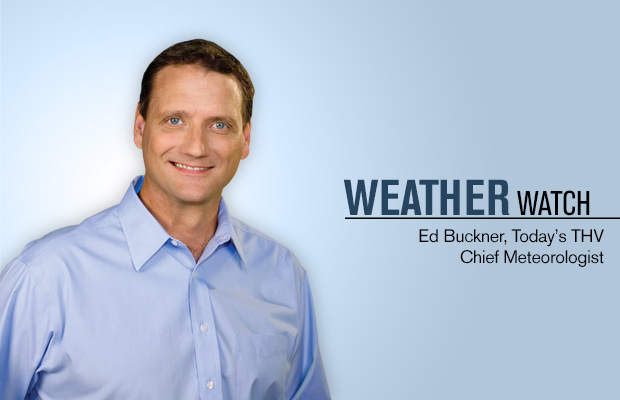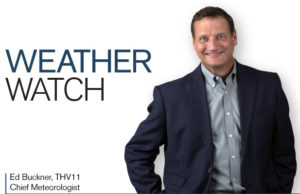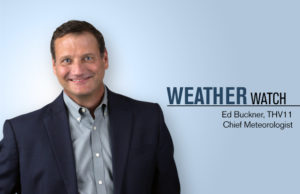Weather Watch: Jack Frost Returns – According To Who?

Every year that goes by brings some kind of weather story or event. Whether it’s a tornado outbreak, an ice storm, or just a hot and dry summer, every year is remembered by something. So how far back do our memories go? The cold winters and hot summers begin to blur for even me unless it’s a rather rare or exceptional event.
So lets talk about winter. I hear a lot of how bad last year’s winter was, but “bad” is a subjective term. I do know the several “minor” sleet and snow events caused for major headaches for most. Even though we have had much more damaging ice and snow events, any kind of winter precipitation is a major issue in Arkansas. So for many it was a bad winter.
Another of the many questions I get from folks is the long range forecast question. What’s winter look like? Is next summer going to be hot? If we have a hot summer, will it be a cold winter? While we do have extended range forecasts, they should not be taken literally. They should be interpreted more for trends and guidance and they can be wrong. I don’t recall seeing any long range forecasts last year that predicted the extreme cold we experienced, nor for the near record snowfall of the winter of 2012/2013.
Last year’s winter was exceptionally cold and snowy across most of the United States. A repeat of this is not likely this winter, although the official NOAA winter forecast does call for below average temperatures in the south, central and southeastern states. The precipitation forecast calls for equal chances for either above or below normal rain/snow. That is NOT to say there won’t be winter weather. Any precipitation that might fall during a cold spell could cause problems. The two just have to come together at the right time.
The expected cold winter is forecast because of several atmospheric events. I will attempt to explain these another time.
Now let’s talk about the not-so-scientific ways to forecast the weather. The ground hog, folklore and the Old Farmer’s Almanac are some of the most popular. Some swear by their forecasts while most scientists and meteorologists scoff at them. The Old Farmer’s Almanac has modernized into now using advances in solar science, climatology and meteorology.
The forecasts from the almanac has been compared to actual weather events and they have been correct sometimes. In terms of getting the weather anomalies right, for example whether it will be colder or warmer than normal, the Old Farmer’s Almanac is correct about 50 percent of the time. This is of course similar to flipping a coin.
This year both the Almanac and the NOAA weather forecasts for winter are fairly in line with each other. Here is what the almanac says-“winter will be much colder than normal, with below-normal precipitation. Snowfall will be near or slightly above normal in the north, but significant snowfall is unlikely in central or southern areas. The coldest periods will occur in late December and January, with the snowiest periods across the north in mid- and late December and early January.”
Of course there’s more in the almanac than weather forecasts. There’s lots of information in that little book. Interesting articles, facts on the calendar and astronomy, tips on when the best and worst times to do anything should be and lots of advertising as well. Even I had to buy one to see what I could learn. For instance I found out that the slowest spinning object in the universe is the planet Venus. A person could walk faster than it rotates.
Time will tell what winter will bring and who might be right, I just hope my forecasts keep a better than 50 percent accuracy! So far so good.








0 comments